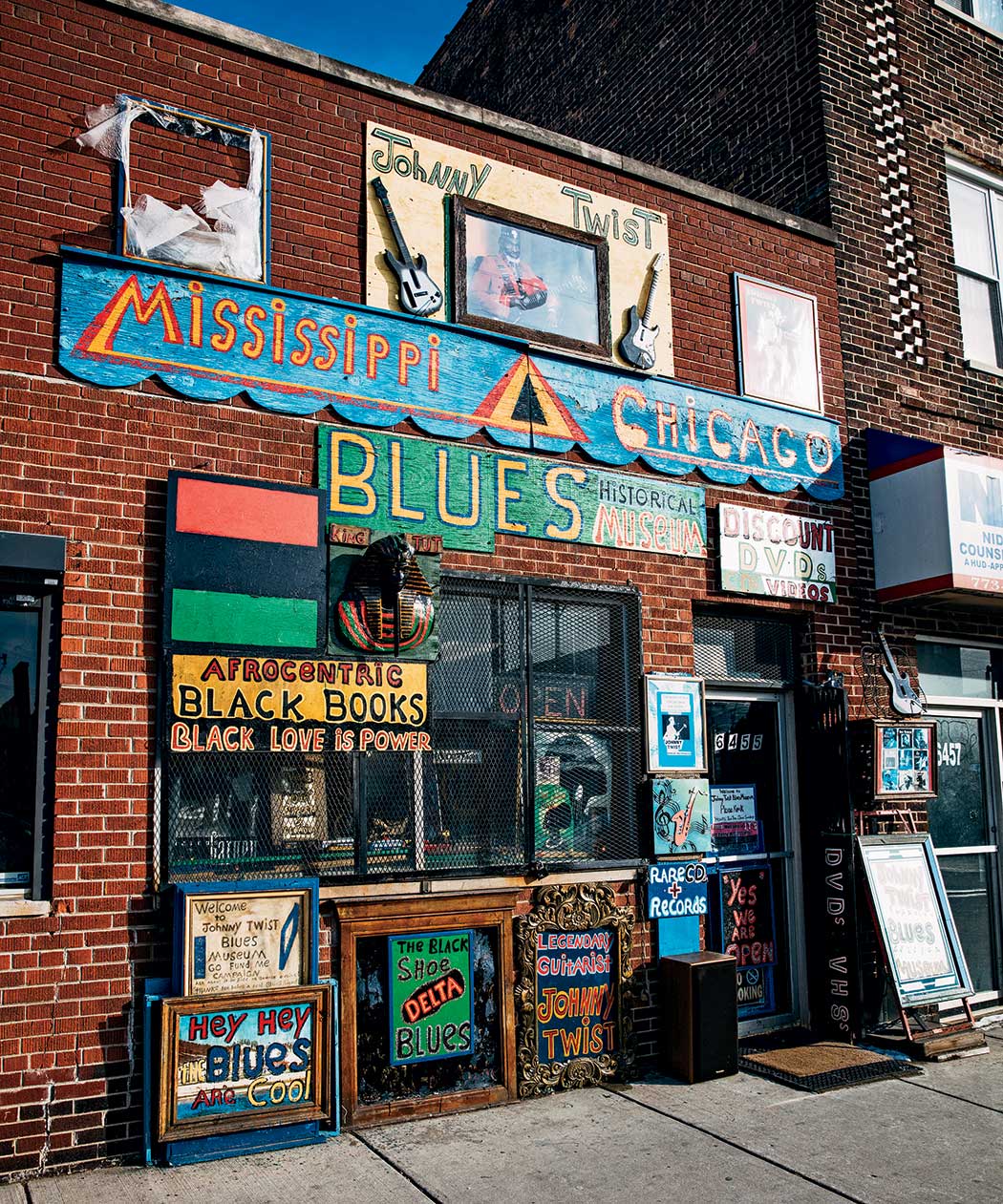I don’t often take Cottage Grove Avenue on the way home, but traffic forced my hand one warmish Saturday afternoon, and I found myself stopped at a light along a stretch near 65th Street in Woodlawn when the sound of a Muddy Waters tune drifted through my half-open window from somewhere vaguely to my left.
I turned my head and saw a vision: a kaleidoscope of red and black and green and gold on a small brick storefront. Inspecting the façade more closely, I realized it was a checkerboard of slogans (“Black Love Is Power,” “Up with Divine Blackness,” “Down with Self-Black Hate”) and hand-painted pictures (a musical note, a peach-colored saxophone, and, apropos of nothing, a small table on which were perched a pair of peep-toe heels, a pair of polished black oxfords, and a single spectator shoe with a bow of Day-Glo green lace).
What was this place? I swung my car around and eased into a spot in front. I walked up to the entrance and read a handwritten sign: “Welcome to Johnny Twist Blues Museum. Please knock.”
I did, and a few seconds later, the door opened and out ambled a 70-ish black man with a deeply lined face.
He wore an embroidered cap, a string of cowrie shells, and a dashiki. He regarded me warily and asked what I wanted. He brightened a little when I said I would like to see the museum.
“OK, it’s $5,” he said. After I handed over the cash, he led me inside and introduced himself: “I’m Johnny Twist, a living legend.”
We’d entered a narrow room filled with old guitars and photos of old guitars—including a picture of a 1958 Gibson Flying V in the hands of Twist himself, who was holding the instrument behind his neck—as well as newspaper clippings, blues-related ephemera, and several gig posters featuring him sharing the bill with the likes of Buddy Guy and Howlin’ Wolf at old Chicago clubs such as the Checkerboard.
Twist did not let me take his picture—he said he wanted to remain “elusive”—though he happily shared details of his long and (in his mind, at least) storied career as a bluesman, a collection of rambling anecdotes he referred to unabashedly as “The Legend of Johnny Twist.” He also told me about the GoFundMe page he’d created with the aim of keeping the museum afloat. I hope he succeeds, because this place is one of a kind. But you have to see it for yourself. Just remember to bring a sawbuck: five dollars for admission and, please, another five for the fund. He is, after all, a legend.




